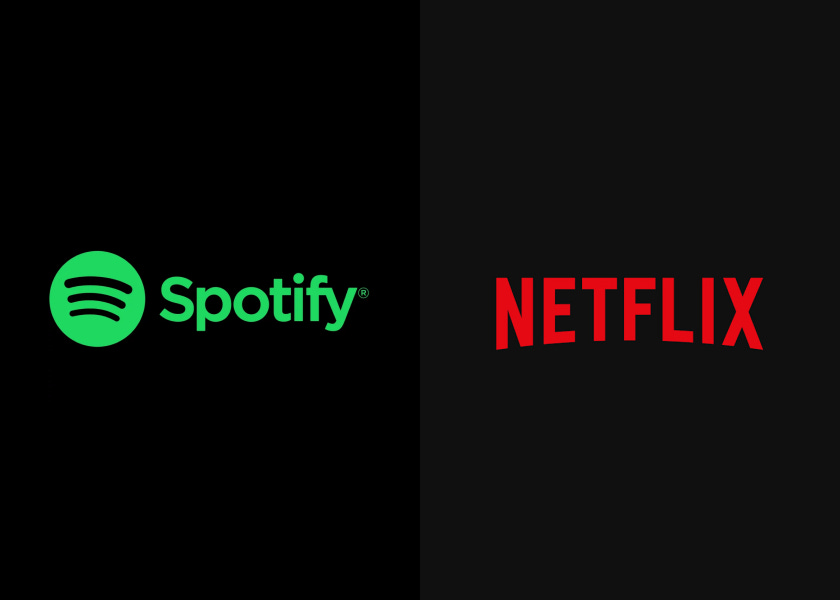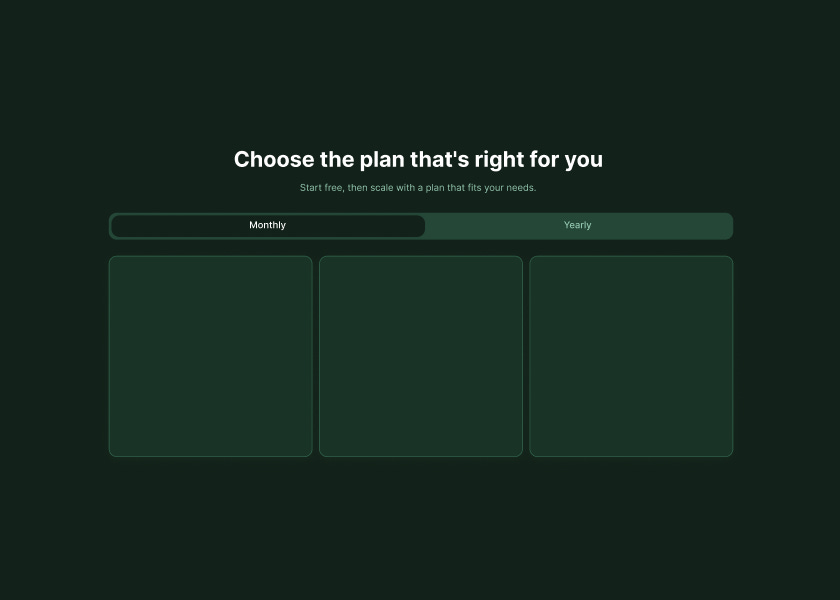The Psychology of Pricing and How Smart Choices Drive Conversions
Why 3-Tier Pricing Beats Complex Plans and Data-Driven Insights from Spotify, Netflix & SaaS Leaders
As a designer, one of the things I consistently do is analyze and study other brand designs from top companies like Netflix, Spotify, and Amazon, to SaaS products like HubSpot, Miro, Bonsai, and Intercom. There's even a SaaS design database that helps me ideate, understand functionality, and implement insights into my projects.
Out of all the design elements I study, the pricing section seems the simplest on the surface but it's actually the most important because this is what makes you money. When I dive deeper into the approaches of Spotify and Netflix, both companies seem more focused and strategic than they initially appear.
The Hidden Complexity of Simple Choices
What fascinates me about pricing design is how it balances psychology with business objectives. Take Spotify's approach: they present what appears to be a straightforward three-tier structure (Individual $11.99, Duo $16.99, Family $19.99), while Netflix offers multiple plans including Standard with Ads, Standard, and Premium tiers.
Both companies are wrestling with the same fundamental challenge: how many options should you give customers without overwhelming them? The answer lies in decades of behavioral research that reveals something counterintuitive about human psychology
The Reality of User Behavior
Here's what I've observed after analyzing hundreds of pricing pages: users spend an average of 6 seconds on a pricing page before making a decision to stay or leave. That's barely enough time to read three plan names, let alone compare features across multiple tiers.
When I conduct user testing sessions, I consistently see the same pattern. Present someone with two options, and they'll compare them quickly. Show them three options, and they'll gravitate toward the middle one. Give them four or more, and watch their eyes glaze over as they either pick the cheapest option or abandon the page entirely.
The most telling insight comes from heat map analysis of pricing pages. On three-tier pricing pages, the middle option gets 60% of the visual attention. On pages with four or more tiers, attention gets scattered, with no single option receiving more than 30% focus. Users literally don't know where to look.
This isn't theoretical its behavioral reality playing out on millions of pricing pages every day.
Why Three Tiers Hit the Sweet Spot
When I examine successful SaaS companies, a pattern emerges. Studies by behavioral economists show that when presented with three options, 66% will choose the middle one, 23% will opt for the low-priced one, and 11% will gravitate towards the high-priced package.
This distribution isn't random it's the result of carefully designed choice architecture:
The Goldilocks Effect: Customers instinctively gravitate toward the middle option as the "just right" choice.
Anchoring Psychology: The high-end tier makes the middle option feel reasonably priced.
Cognitive Load Management: Three options feel manageable and don't trigger decision paralysis.
The cheapest option for small teams, individuals, or new customers trying out the product. The middle tier used for upsells. It's often highlighted as the "most popular" or "most economical" option, creating a clear progression that guides customer decision-making.
Strategic Insights from Streaming Giants
Spotify's pricing design demonstrates masterful choice architecture. They technically offer four subscription types (Individual, Student, Family, Duo), but the Family plan functions as a specialized offer rather than cluttering the main decision tree. This keeps the core choice simple while serving specific market segments.
Netflix's approach is more complex, offering multiple tiers with varying features like ad-supported options, video quality differences, and simultaneous streaming limits. While this serves their diverse global market needs, it creates more cognitive load for users making subscription decisions.
Both approaches work but for different reasons and different business contexts.
The Startup Pricing That You Need to Know
For startups building their first pricing strategy, the research offers clear guidance:
Start with Three Tiers Maximum
Research published by OpenView Partners shows three-tier pricing works well when you want to appeal to three customer personas simultaneously. The approach makes it easier for customers to compare offerings and make quicker purchase decisions. This isn't just theoretical studies indicate a mere 1% improvement in pricing can yield an 11.1% increase in operating profit.
Design the Middle Tier as Your Primary Revenue Driver
Most customers will choose your middle option, so ensure it delivers genuine value at a price point that supports healthy unit economics. The middle tier should feel like the obvious choice for your target customer.
Use Clear Value Differentiation
Each tier needs to solve a distinctly different problem. Avoid feature combinations that require mental math to evaluate. If customers need a spreadsheet to compare your plans, you've already lost them.
Test and Iterate Based on Data
MIT research on three-part tariffs suggests customers tend to buy larger plans than they might need. Customers who switch to a three-part tariff increased their usage by 15.1% on average. This means your pricing strategy directly influences customer behavior and product engagement.
The Conversion Impact
The financial implications of choice architecture are substantial. When customers face decision paralysis, they often choose nothing the worst possible outcome for any business. Too many options can overwhelm consumers, leading to lower engagement, fewer conversions, and increased abandonment rates.
For startups especially, optimizing choice architecture can dramatically impact growth metrics:
Conversion Rate: Simplified choice structures typically see 15-25% higher conversion rates
Average Revenue Per User: Well-designed tiers guide customers toward higher-value options
Customer Satisfaction: Clear, intuitive pricing reduces post-purchase cognitive dissonance
Reduced Support Load: Simple pricing means fewer confused customers and support tickets
Implementation Framework for Startups
When designing your pricing strategy, follow this research-backed framework:
Map Your Customer Personas: Identify 2-3 distinct user types who would benefit from different feature sets or usage levels.
Define Clear Value Props: Each tier should have an obvious use case and clear benefits. Avoid marginal differences between tiers.
Price for Psychology: Use the middle tier as your primary revenue driver, with lower and higher tiers serving as anchors.
Test Relentlessly: A/B test your pricing page regularly. Small changes in presentation can yield significant conversion improvements.
Monitor Post-Purchase Behavior: Track whether customers are choosing tiers that match their actual usage patterns.
The Competitive Advantage of Simplicity
In 2025's attention deficit economy, cognitive ease becomes a competitive advantage. Companies that respect their customers' mental bandwidth will consistently outperform those that don't.
The most successful companies aren't necessarily those with the most features or the lowest prices they're the ones that make decision-making effortless.
Whether you're designing the next streaming platform or building a B2B SaaS tool, the principle remains the same: the best choice you can give customers is fewer choices to make.
Your pricing page isn't just about revenue it's the final conversion point where psychology meets business strategy. Get it right and watch your conversion rates soar.







